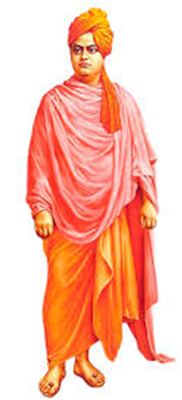Swami Vivekananda
“Sisters
and brothers of America...” a swami in saffron clothes began his speech.
These
words thrilled the audience in 1893 at the Chicago World Parliament of
Religions.
It
was Swami Vivekananda, who took Vedanta, the essence of Hinduism, to the
Western world.
He
was born as Narendranath Datta in Calcutta on 12 January, 1863.
He
became a disciple of Ramakrishna Paramahamsa and later came to be known as
Vivekananda.
As
a youth, he had gone through a spiritual crisis.
He
doubted the existence of God. During this phase, he heard about Sri
Ramakrishna.
In
November 1881, he met Sri Ramakrishna at the Kali Temple in Dakshineshwar.
That
was a turning point in his life.
Their
talks led to a unique guru-disciple relationship.
Sri
Ramakrishna helped clear Narendranath’s doubts.
He
taught Narendranath about pure love and unselfish living.
Narendranath
turned to the life of a sanyasi and changed his name to Vivekananda.
Thereafter,
Narendra Datta was known as Swami Vivekananda. Swami travelled the length and
breadth of India to understand what India is.
Vivekananda
taught his disciples that to serve man is to serve God.
He
established the Ramakrishna Math and worked with a mission.
He
tried to reform Indian society and his writings are still relevant to the new
generation.
Swami
Vivekananda’s works are collected in ten volumes.
His
birthday is celebrated as National Youth Day in India.
Swami
Vivekananda died at the young age of 39 on 4 July, 1902.
His
legacy remains even a century after his death.
Swami
Vivekananda is a spiritual force in contemporary India.




